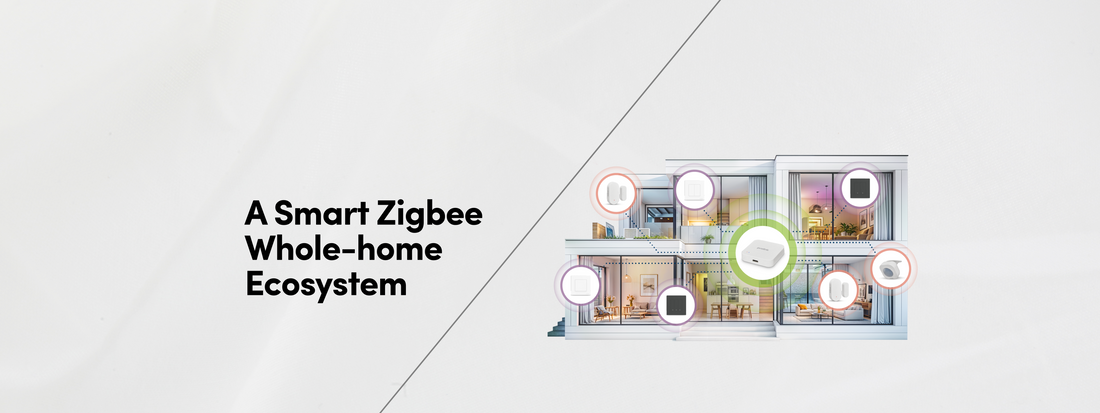Amongst all the up-and-coming smart home technology, Zigbee stands out as a popular wireless communication protocol that connects various smart devices seamlessly. Whether you’re controlling smart lights, thermostats, sensors, or locks, Zigbee plays a crucial role in ensuring efficient and reliable automation. But what exactly is Zigbee, and how does it enhance smart home connectivity? Let’s dive in.
Understanding Zigbee
Zigbee is a low-power, wireless communication protocol designed specifically for smart home and Internet of Things (IoT) applications. It operates on the IEEE 802.15.4 standard, making it ideal for short-range, low-energy communication between devices. Unlike Wi-Fi or Bluetooth, which can be power-hungry and limited in range, Zigbee is optimized for low-bandwidth devices that require consistent connectivity with minimal energy consumption.

How Zigbee Works
Zigbee creates a network that allows multiple devices to communicate with each other efficiently. When a Zigbee device is powered on, it searches for a nearby Zigbee coordinator or hub. The coordinator is the central controller that manages the Zigbee network. Once connected, the battery-powered Zigbee device communicates directly with the coordinator.
These devices are designed to send small amounts of data, such as "motion detected" or "door open/closed" signals, only when needed. To conserve battery, they stay in a low-power sleep mode most of the time and wake up briefly to transmit data. This efficient communication allows the battery to last for months or even years.
All commands and updates go between the end device and the coordinator. The coordinator then processes the signal or sends it to a mobile app or smart home platform as needed.
Let's picture it this way -- Imagine a team of walkie-talkies (your smart devices). Zigbee is the protocol that allows them to communicate efficiently and reliably. Some walkie-talkies can talk directly to the base station (hub), while others relay messages through their teammates, creating a strong, interconnected network.
Why Choose Zigbee for Your Smart Home?
Zigbee offers several advantages that make it a preferred choice for smart home enthusiasts:
-
Energy Efficiency: Zigbee devices consume minimal power, allowing battery-operated sensors and remotes to last for years.
-
Device Interoperability: Zigbee supports thousands of devices from various Tuya-compatible brands, ensuring compatibility within a single ecosystem.
-
Scalability: With mesh networking, adding new devices to a Zigbee system is seamless, making it ideal for growing smart home setups.
-
Enhanced Security: Zigbee incorporates AES-128 encryption, providing a secure connection between devices to protect user data.
Zigbee vs. Other Smart Home Protocols
While Zigbee is a robust option, it’s not the only smart home protocol available. Here’s a quick comparison:
|
Feature |
Zigbee |
Wi-Fi |
Bluetooth |
Z-Wave |
|
Power Consumption |
Low |
High |
Medium |
Very Low |
|
Range |
Medium (Mesh) |
High (Router) |
Short |
Long (Mesh) |
|
Speed |
Medium |
High |
Medium |
Medium |
|
Device Limit |
High |
Limited |
Limited |
Moderate |
|
Interference |
Low |
High |
Medium |
Low |
Getting Started with Zigbee
To set up a Zigbee-powered smart home, you’ll need a Zigbee hub or gateway, which acts as the central controller for all your Zigbee devices.
Once the hub is set up, you can start adding Zigbee-enabled sensors, wall switches, sirens, and many more, allowing seamless automation and control.

Final Thoughts
Zigbee is a powerful and efficient smart home communication protocol that enhances connectivity, automation, and reliability. With its mesh networking capabilities, low power consumption, and broad device compatibility, Zigbee provides a robust foundation for a smarter and more interconnected home.
Whether you’re just starting or expanding your smart home, Zigbee ensures a seamless and scalable experience. Ready to upgrade your home automation? Start with a Zigbee hub and explore the vast ecosystem of Zigbee-enabled devices here.
--
Explore Prolink Smart Zigbee Series here.
